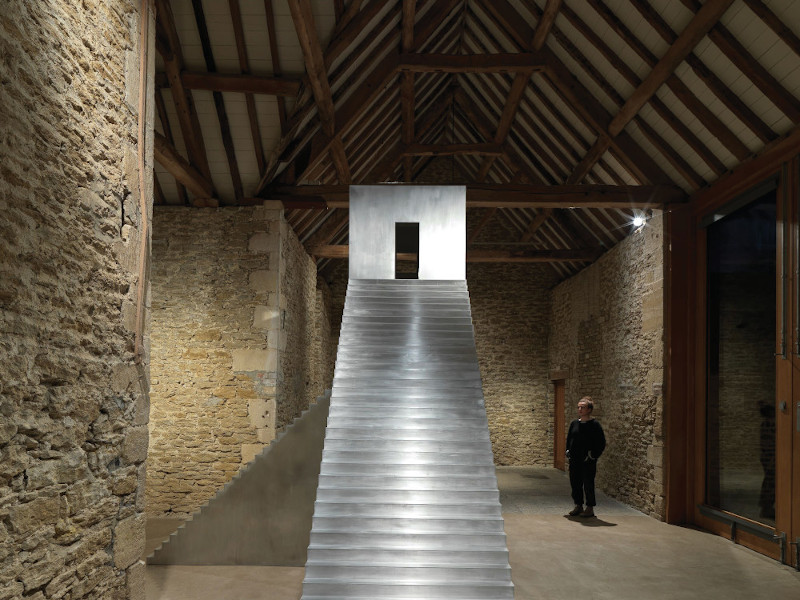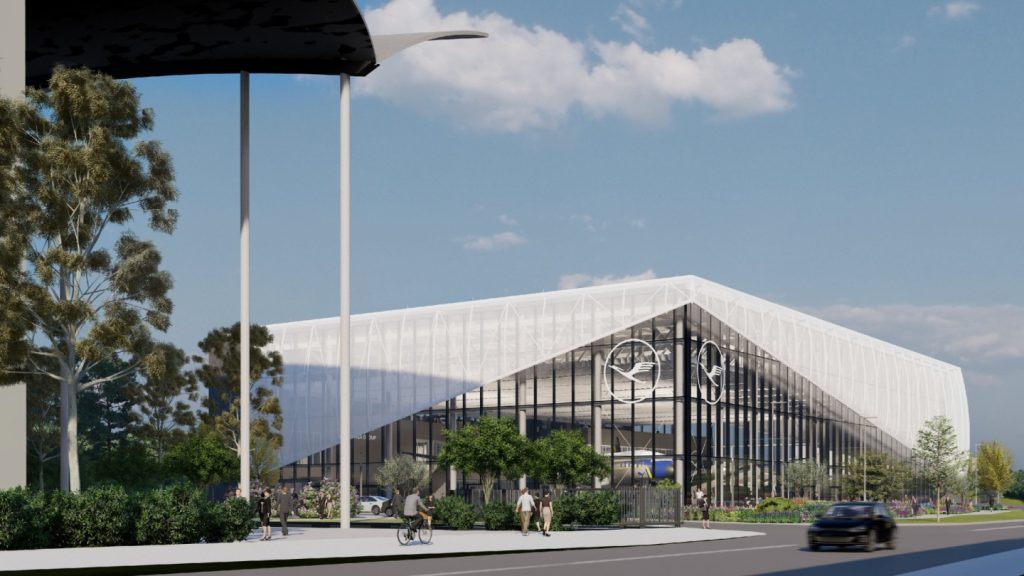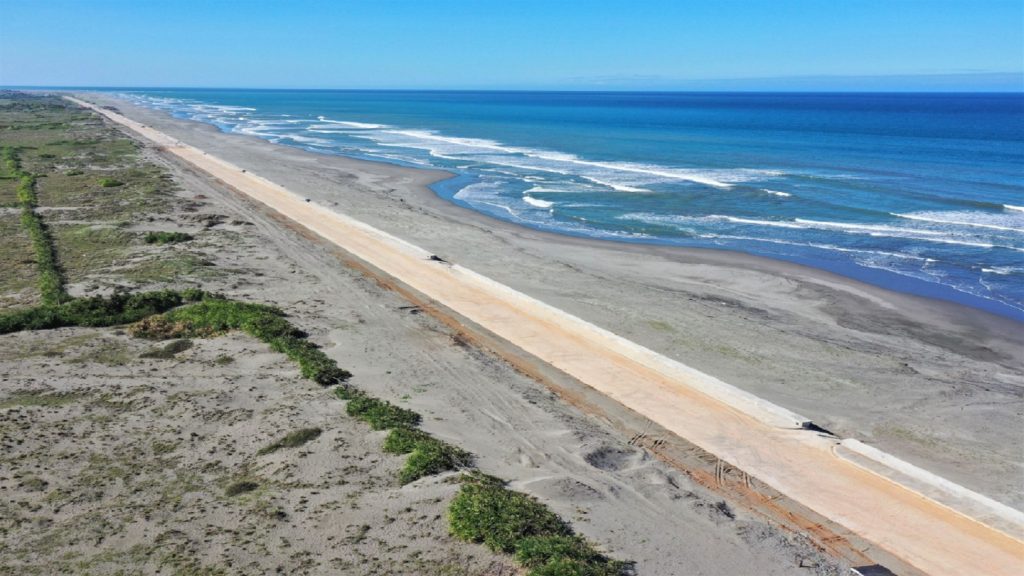

Words by Veronica Simpson
There are few artists who have re-imagined architecture quite so comprehensively as Swiss-born sculptor Not Vital (and yes, that is his real name). Inspired by a childhood in the Engadine valley – surrounded by mountains, cut off from the rest of the world, enjoying five months of annual school holidays climbing trees, scaling peaks, building dens – he has pretty much dedicated himself to dreaming up or building curious structures that speak of houses or temples or – more frequently – towers, but which are most definitely not habitable.
 Cannot Enter Cannot Exit (2020) is designed to be the same height as Michelangelo’s David
Cannot Enter Cannot Exit (2020) is designed to be the same height as Michelangelo’s David
Ah, the freedom: being able to cook up any crazy confection without the obligation to consider plumbing, ventilation or the straitjacket of national space standards.
Freedom from straitjackets is something of a leitmotif for Vital, who – now in his seventies – leads a kind of rock star existence, dividing time between homes and studios in Niger (Agadez), Rio, Beijing and Sent, his tiny village base in the Engadine. He even recently purchased a local historic landmark – the 11th century Tarasp Castle, perched high on a rocky outcrop near the town of Scuoi, whose interiors he has resculpted as display space and archive for his works.
How well do you really know your competitors?
Access the most comprehensive Company Profiles on the market, powered by GlobalData. Save hours of research. Gain competitive edge.

Thank you!
Your download email will arrive shortly
Not ready to buy yet? Download a free sample
We are confident about the unique quality of our Company Profiles. However, we want you to make the most beneficial decision for your business, so we offer a free sample that you can download by submitting the below form
By GlobalDataAll of which indicates a level of wealth and success that comes as a surprise when most art lovers in the UK had barely heard of him until his 2016-17 show – his first in the UK – at the Yorkshire Sculpture Park. I confess I was one of them, but gladly accepted the invite to see his current show, titled Scarch (for his blending of sculpture with architecture) at Swiss/global gallerists Hauser & Wirth’s Somerset outpost.
This former Grade II listed farm, its barns converted into elegant galleries by Luis Laplace, is a wonderful place to see Vital’s work, given that the rustic origins of the buildings are celebrated both in aesthetics and name. Within the lofty, triple-height dimensions of The Threshing Barn, we find Vital’s House to Watch the Sunset (2005). This is a scaled down recreation of a tower he first constructed in mud in Agadez to fulfil one function: it had to be just tall enough for him to see the sunset over the neighbouring palm trees. The only way he could get the height he wanted without bulking out its walls was by propping it up on three sides with steps; he has a thing about numbers, so the steps go up in increments of 13. He was so pleased with the purity of his solution – which combines the simplicity of a native hut with shades of Egyptian pyramid construction – he vowed to build one on every continent, in site-specific materials. He has completed several already, including one in the Amazon (in wood), and one in Mongolia (iron). He will also produce one in Venice this summer, in the church of San Giorgio Maggiore. This Somerset model is made of aluminium.
 The synagogue scheme for Tel Aviv has been rendered with a stack of green drinking straws
The synagogue scheme for Tel Aviv has been rendered with a stack of green drinking straws
It turns out that Vital’s freedom of spirit is followed through in his approach to where he lives or works. Every location has a function: China is where he makes sculptures, whereas Rio – and only Rio – is where he draws, and where his improvisatory skills were tested recently by the closure of the only art supply store in town, which meant he had to find other materials with which to sketch. The result – displayed along the walls of two galleries here – is a delightful selection of ‘sculptures on paper’, combining both whimsy and wit. There is a house drawn in dental floss, and whitish, lumpen structures evoked by collapsed coffee filters; cotton wool, silicone patches and plastic bags are deployed rather effectively to conjure unusual material qualities to commonplace forms. I particularly liked his synagogue scheme for Tel Aviv, rendered with a stack of green drinking straws, or a Hotel for Aa (wherever that is), rendered in sheets of stickers. This playfulness of spirit allows him to respond to one singular feature of a place, like its name: such as the tower he proposes for Uppsala in Sweden, sketched in pink drinking straws, still sheathed in thin, white paper. Timbuktu, on the other hand, he says, was a huge disappointment – ‘the name is bigger than the place’ – and doesn’t seem to have deserved a commemorative sketch.
For this show, the gallery commissioned a new work in stainless steel that gleams in the entrance courtyard, its less than perfectly flat planes warping the reflected honey-coloured stone of the surrounding farm buildings.
Cannot Enter Cannot Exit (2020) is studded with ceramic ‘snow bolts’, like white pimples or blisters on its smooth, cold skin. Its apertures are inhumanly small, its interior impossibly constricted – it is just big enough for someone to crouch inside and erect the thing but not to move around in it. Designed to be the same height as Michelangelo’s David, at just over five metres, it, too, is a ‘heroic’ structure of no practical value. And it is surrounded by strange, white monuments to agriculture: his Bales (2018) are sculpted in steel and cloaked in white varnish, to commemorate the cycles of growing, reaping and feeding that have fuelled our lives since the beginnings of human settlement.
What does Vital offer to those whose work is all about the creation of meaningful space within tough, structural, practical, economic and logistical constraints? Maybe nothing.
But it’s a great workout for ones’ spatial and material sensibilities – a palette cleanser, an argument for staying in touch with curiosity and wonder. And there is certainly value in re-perceiving architecture not simply as a structure to house activities – whether dwelling, working or playing – but as a form designed to facilitate a particular way of looking at the world.







